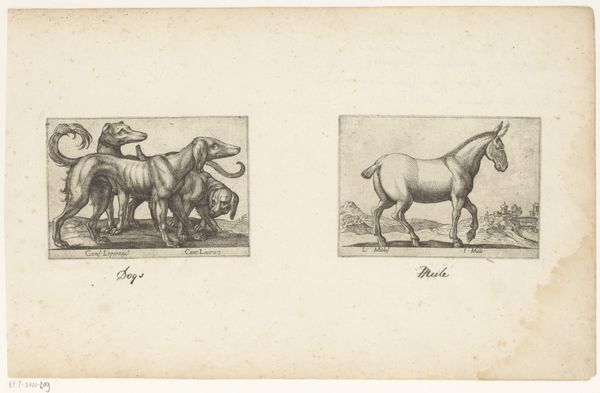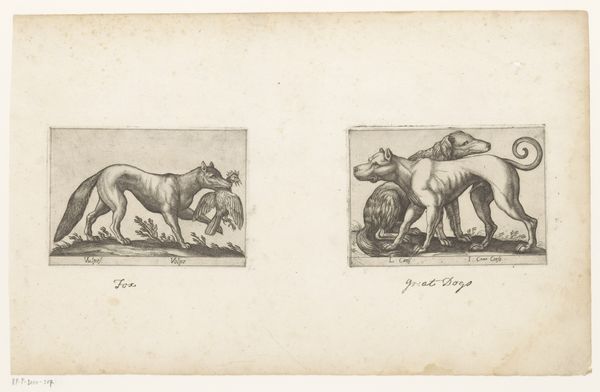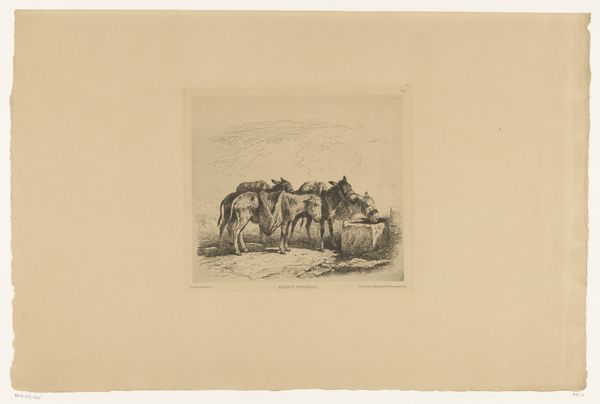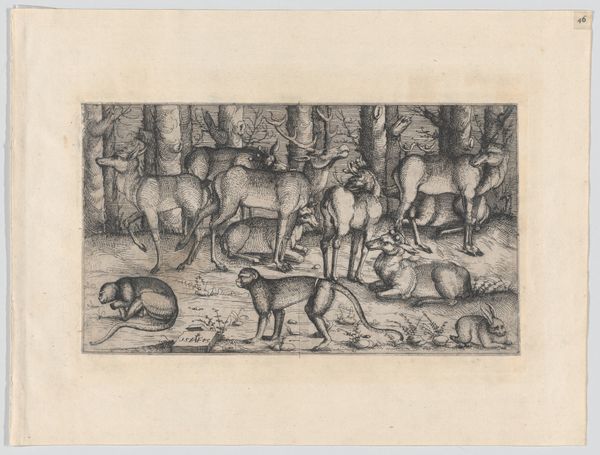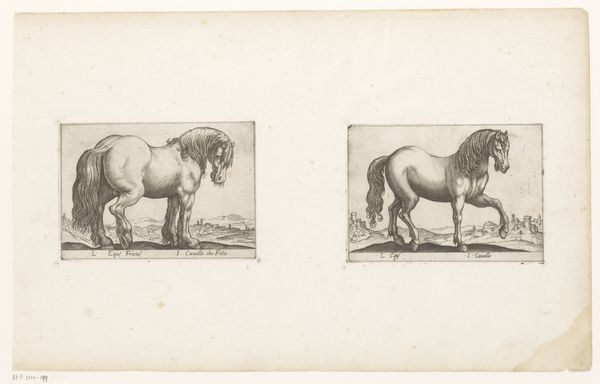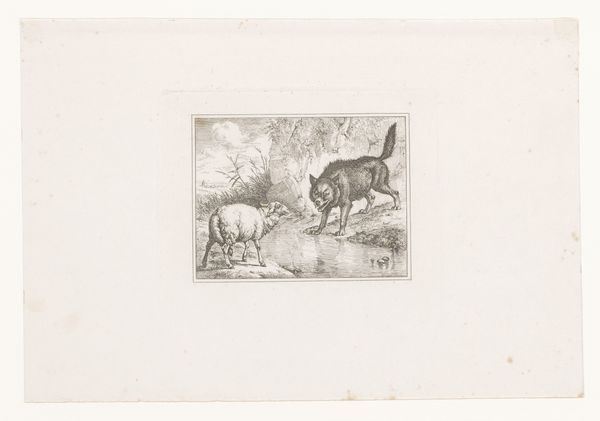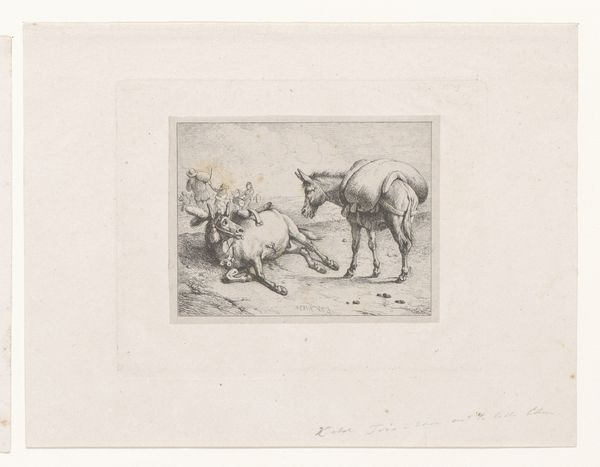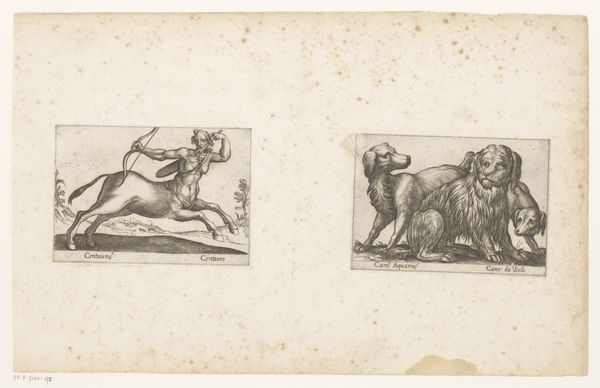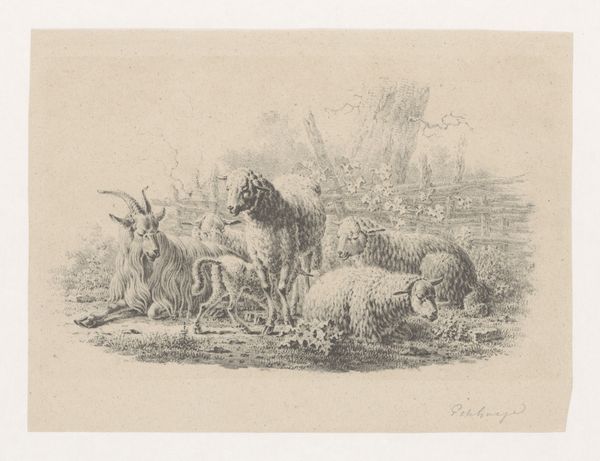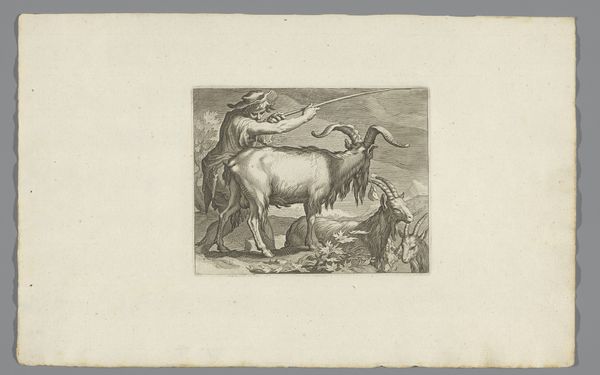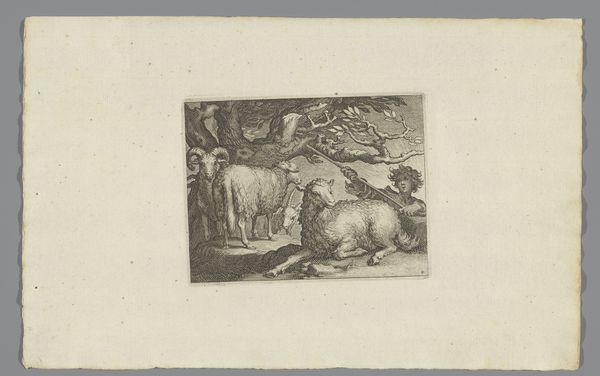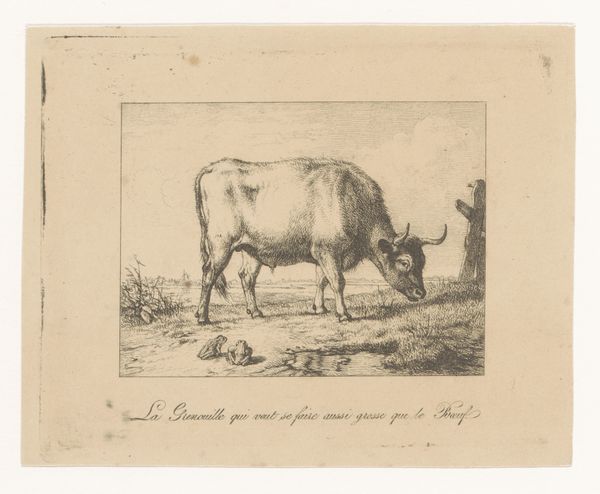
print, engraving
#
animal
# print
#
dog
#
figuration
#
11_renaissance
#
genre-painting
#
engraving
Dimensions: height 96 mm, width 139 mm, height 98 mm, width 138 mm
Copyright: Rijks Museum: Open Domain
Curator: This engraving, "Honden," meaning "Dogs," comes to us from the workshop of Antonio Tempesta, likely dating before 1650. It's currently held at the Rijksmuseum. What strikes you about it initially? Editor: There’s a certain solemnity, isn’t there? A kind of almost classical formality in how these creatures are presented, almost as if these are dogs posing for noble portraits. Curator: Absolutely. Given its time, dogs here weren't simply pets; they signified status, hunting prowess, and were intertwined with aristocratic culture. Tempesta presents them as distinct breeds with varied roles, almost as social actors. We might interpret this piece, in the context of 17th century class, as a commentary on status and function within society. Editor: The symbols are incredibly layered. Consider the juxtaposition of the shaggy, perhaps older breed next to the smooth-coated one. There is this distinct echo of established societal structures. Look closely. These animals were created to deliver a message. Curator: Precisely, this print is an index of dog breeds – a typology of canines which aligns directly with systems of class, gender, and race hierarchies that permeate society. Dogs weren't simply animals; their breeds became allegories for human conditions. Editor: And it’s all captured with this incredible precision and sensitivity using engraving, a printmaking technique with a rich and fascinating history. The lines define not just the shape but what feels like the very soul of each dog. The rendering almost reminds me of family crests of the time. Curator: A sharp reading. Perhaps the print's composition acts almost as a heraldic tableau, solidifying the relationship between humankind and their domesticated animals as an intersection between nature, status, and even power. Editor: The piece seems so self-contained, but your description provides a powerful connection between the symbolic role of these canines and larger structures. It asks questions, such as "What constitutes civilized status?" It leaves one to question one’s own societal position. Curator: Indeed. It offers a lens through which to understand our shared histories, acknowledging the ever-shifting constructs of our own social narratives. Editor: It adds such an interesting dimension to what I saw at first as simply, though beautifully, observed dog studies. Curator: Context opens us to profound dimensions, always transforming simple looking into a complex dialogue about identity.
Comments
No comments
Be the first to comment and join the conversation on the ultimate creative platform.
